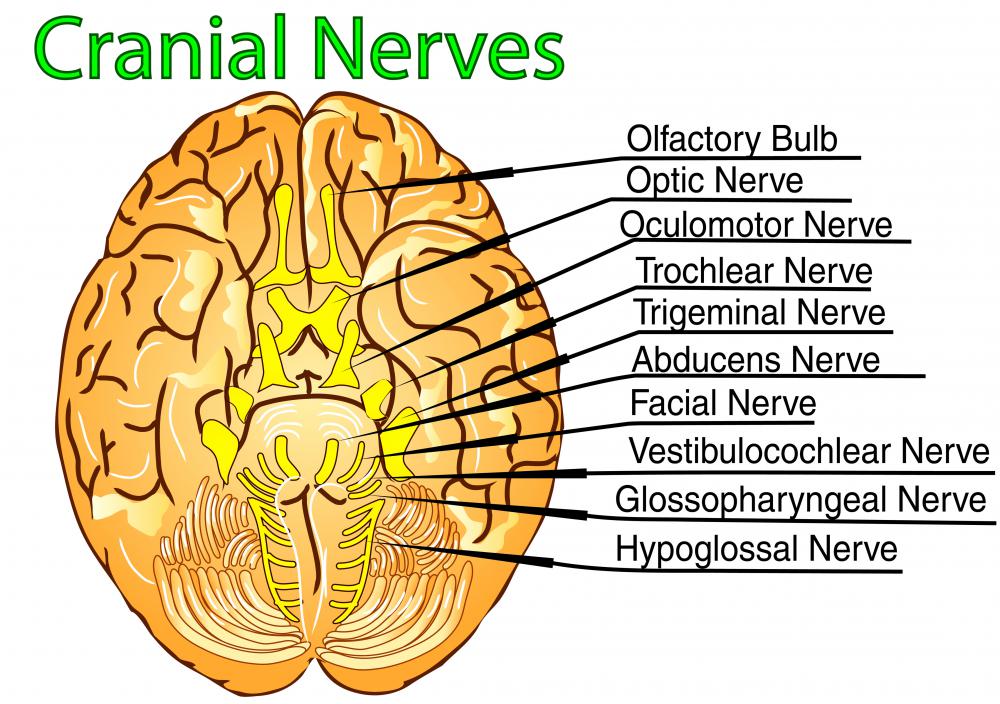

The latter are not encountered in the CNS and are, therefore, not discussed further. In contrast, “extraneural” (ie, soft tissue) perineuriomas do not display entrapped axons. Thus, axon entrapment distinguishes both perineuriomas and neurofibromas from schwannoma.

5 These tumors are formed by neoplastic perineurial cells arranged into “pseudo-onion bulbs” around axons within the perineurium and endoneurium of nerve fascicles. 4 They most commonly affect peripheral motor nerves, but sensory and cranial nerve involvement has also been reported. 2 Perineuriomas are exceedingly rare, representing less than 1% of nerve sheath tumors. Histologically, the mass appears as a jumble of benign-appearing nerve minifascicles interwoven with reactive fibrous tissue.

For example, traumatic neuroma typically arises in the setting of injury to a peripheral nerve, as the name implies (eg, brachial plexus injury associated with obstetric delivery) the resulting mass develops from the nerve's regeneration and a fruitless attempt to re-establish its connections. Other categories of “peripheral nerve sheath tumor” also exist. 2 Although benign lesions with a generally favorable prognosis, the ultimate treatment outcome for both schwannomas and plexiform neurofibromas depends largely on size, location, and proximity to important anatomic structures. Plexiform neurofibromas most commonly occur in the orbit, neck, back, and inguinal areas, most occurring in patients with neurofibromatosis type 1 (NF1). When a neurofibroma involves multiple branches of a nerve plexus or multiple fascicles within a large nerve, it adopts and amplifies the normal anatomic tortuosity to produce a “plexiform” growth pattern that some authors have likened to a bag of worms ( Fig 6). This intraneural growth pattern, with its entrapped axons, provides a key feature to histologically distinguish neurofibroma from schwannoma. The tumor cells grow diffusely within and along nerves, causing the nerves to expand radially while entrapping native neural elements within the substance of the tumor ( Figs 4 and 5). 3īy contrast, neurofibromas appear to contain all the cellular elements of a peripheral nerve, including Schwann cells, fibroblasts, perineurial cells, and axons. 2 Most commonly, schwannomas impact the central nervous system (CNS) by involving the vestibular branch of cranial nerve VIII or the dorsal roots of the spinal cord ( Figs 2 and 3). Schwannomas typically grow within a capsule that remains peripherally attached to the parent nerve ( Fig 1). Schwannomas are derived from the myelinating cell of the peripheral nervous system and are composed almost entirely of Schwann cells, which were originally described by the prominent German histologist and physiologist Theodor Schwann (1810–1882). Now the rubric “peripheral nerve sheath tumor” actually defines several unique pathologic entities including schwannoma, neurofibroma, perineurioma, traumatic neuroma (nonneoplastic all benign), and malignant peripheral nerve sheath tumor (MPNST). In Antoni's time, researchers labored intensely to identify distinguishing features that would allow consistent differentiation of subtypes of these tumors. Recognition of these patterns has proved useful in the histologic identification of schwannomas.Ĭurrent concepts in the classification of peripheral nerve sheath tumors have evolved over many decades. Antoni also described seemingly distinct loose microcystic tissue adjacent to the Antoni A regions, and these came to be known as Antoni B regions. 1 Antoni, who would later become professor of neurology at the Karolinska Institute in Stockholm, based his observations on analysis of 30 cases and described a “fibrillary, intensely polar, elongated appearing tissue type” which he called “tissue type A.” 1 These highly cellular regions were eventually referred to as Antoni A regions by later authors. In 1920, Nils Ragnar Eugène Antoni (1887–1968), a Swedish neurologist and researcher working at the Royal Neurologic Clinic of Stockholm under the supervision of the eminent neuropathologist and now controversial eugenics proponent Frithiof Lennmalm (1858–1924), described 2 distinct patterns of cellular architecture in the peripheral nerve sheath tumors, which would become known as schwannomas.


 0 kommentar(er)
0 kommentar(er)
